In modern football, “movement” is often equated with intensity: constant sprints, pressing triggers, and runs in behind. Yet, one of the most effective tools in elite football is not movement at all, but the deliberate act of standing still.
Far from being passive, stillness manipulates defensive structures, disrupts marking schemes, and creates attacking advantages. The most intelligent forwards understand that in a game where defenders are trained to chase, sometimes the smartest action is to stop.
This article explores the tactical logic behind stillness, examples of its use at the highest level, and how analysts can better understand and apply it.
Why Standing Still Works: The Tactical Logic
Stillness is not the absence of action; it is a tactical trigger. It works because of three interrelated principles:
Exploiting Defensive Momentum
Defenders are trained to track movement. When attackers decelerate or stop, the defender’s forward momentum creates separation — even without the attacker moving again.
Creating Decision Dilemmas
By holding a position, attackers force defenders to choose:
- Step forward and risk opening depth behind.
- Hold the line and risk leaving a passing lane open.
- Switch marking responsibility and risk miscommunication.
Each of these outcomes benefits the attacker.
Timing over Distance
Elite football often comes down to micro-timing rather than covering maximum distance. By delaying movement — even for a second — attackers can arrive at the right space exactly when the ball is delivered.
Tactical Frameworks of Stillness
1. Between the Lines
Attacking midfielders or second strikers often hold their position in the pocket between midfield and defense. Instead of constantly darting around, they “freeze” in the half-space, waiting for defenders to step out. Once the ball arrives, they can turn and attack against a disorganized line.
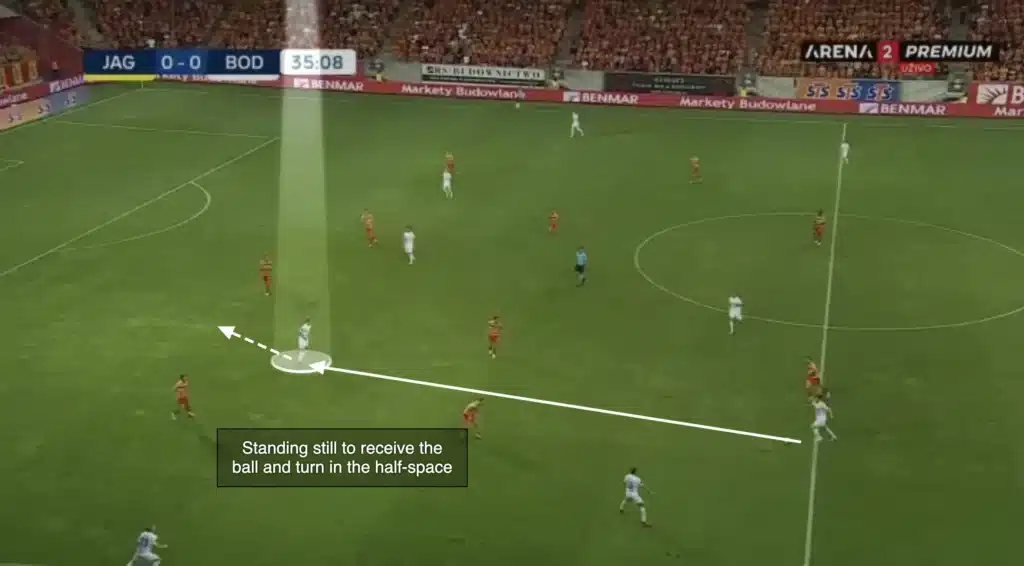
2. In Transition
In transition moments, standing still can create disguised overloads. While defenders track recovering runners, one attacker who pauses centrally may suddenly find themselves completely unmarked, acting as the pivot point for the counter.
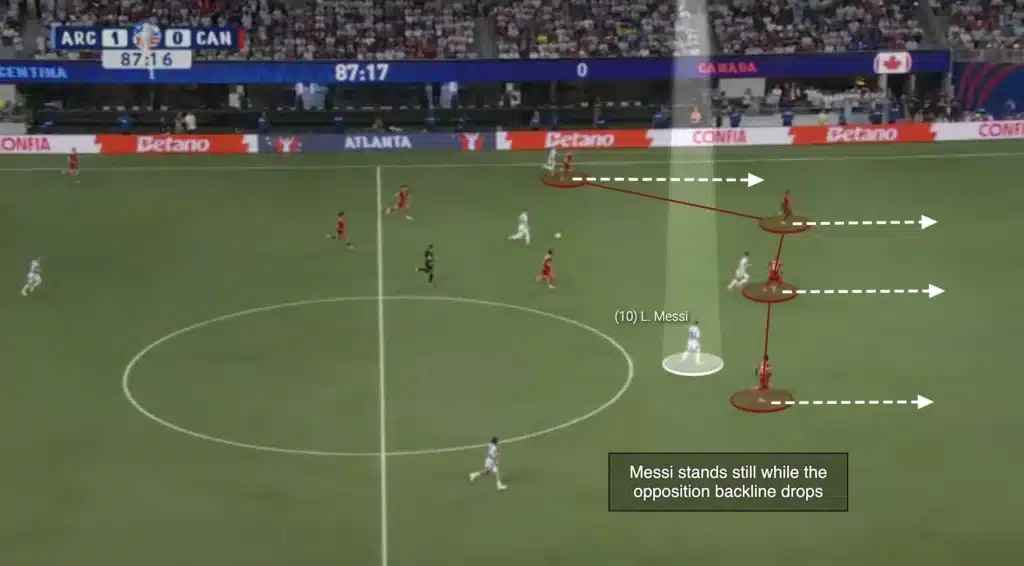
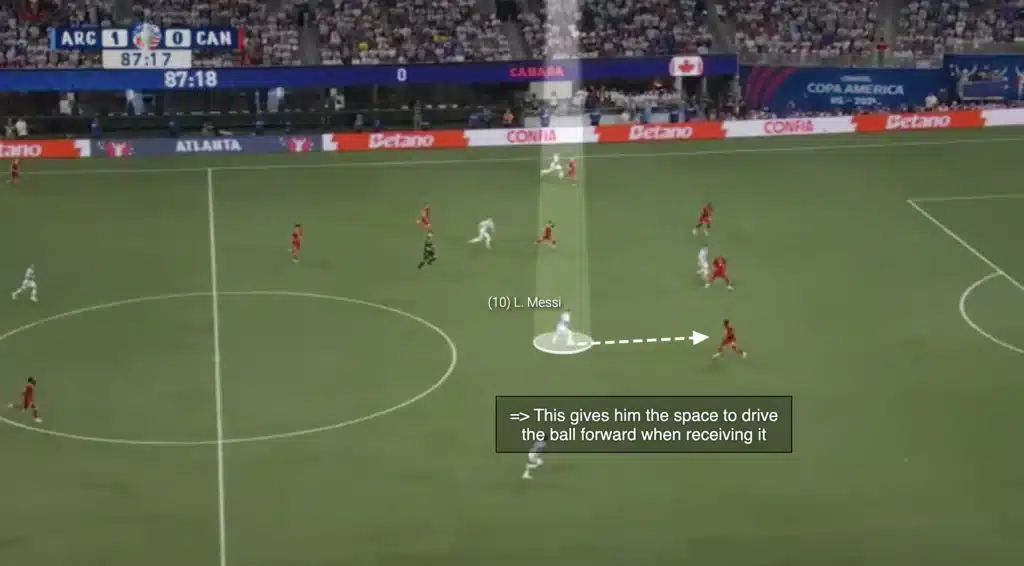
3. In the Box
Inside the box, stillness can be a striker’s most dangerous weapon. Instead of attacking the near post or running toward the six-yard box, an intelligent striker will often stop their run and hold the space near the penalty spot. This freeze creates a pocket of separation as defenders continue dropping, often leaving the cut-back zone completely unoccupied. When the ball is pulled back, the stationary striker has time to set their body, strike cleanly, and finish with control — rather than being forced into an off-balance first-time shot.
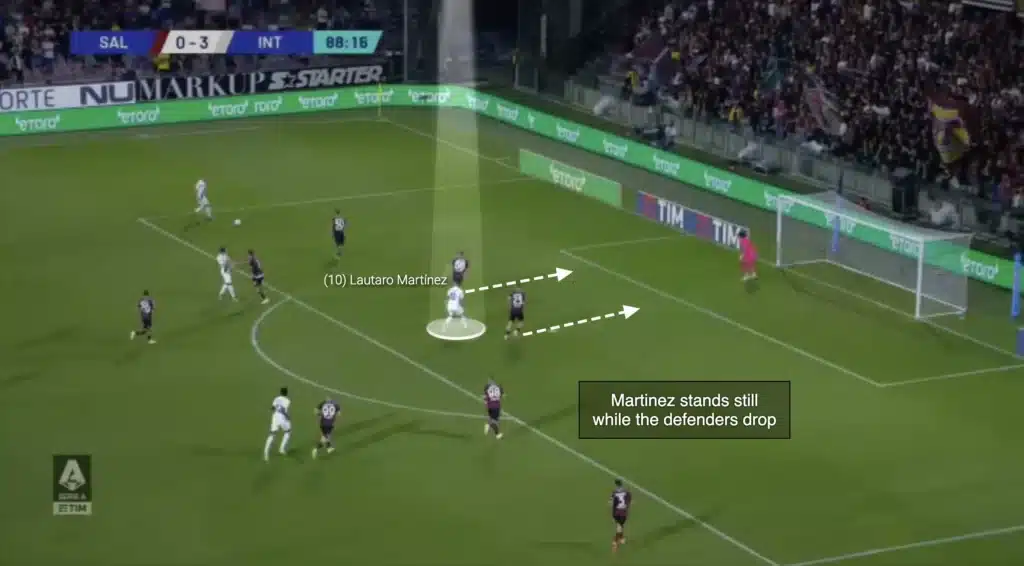
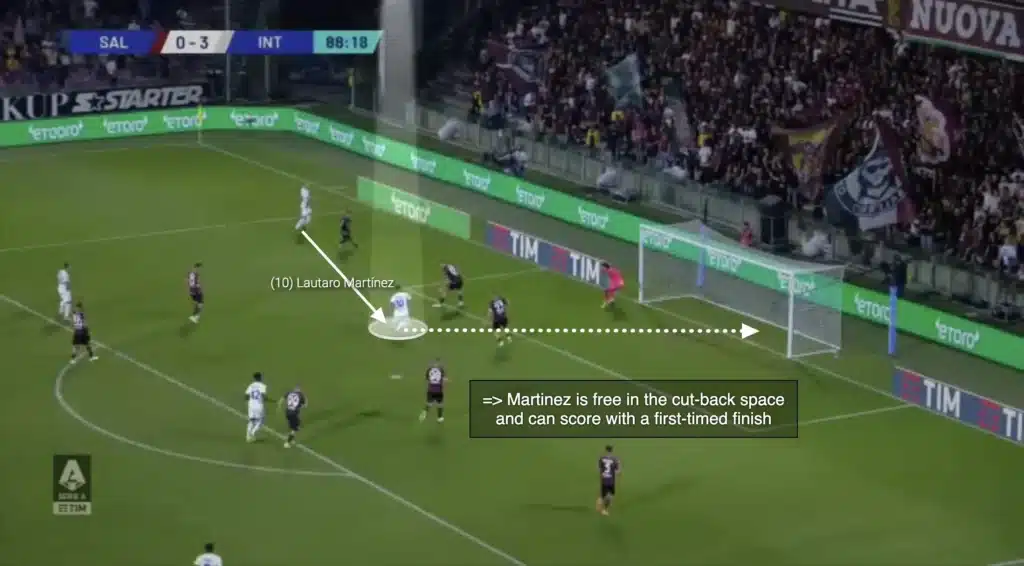
4. Disguised Movements
Stillness will also often serve as the prelude to an explosive movement in the opposite direction. A forward may pause as if disengaged, only to sprint across the front of a defender at the moment of delivery. The pause makes the sprint more unpredictable.
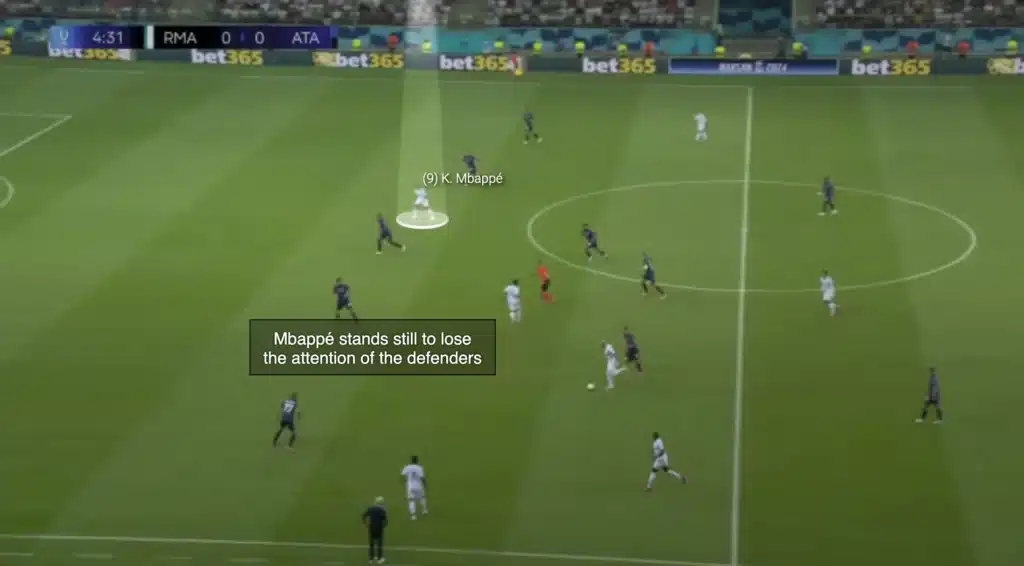
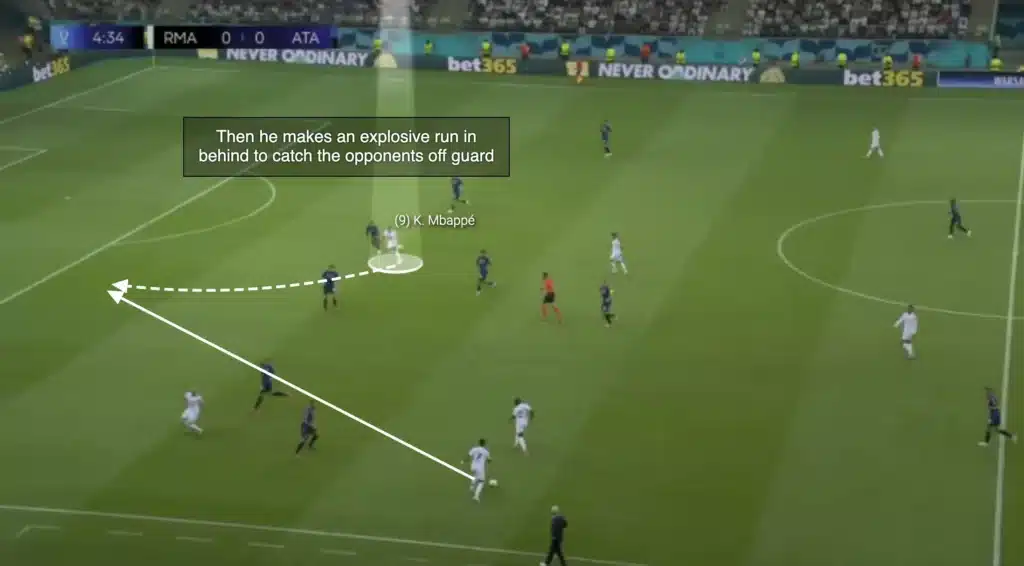
Player Applications: Messi
Lionel Messi is the archetype of this principle. More than perhaps any player in history, he has weaponized walking and standing still. Frequently he appears disengaged, strolling across the pitch, even turning his back to the ball at times. Yet this is calculated deception.
By doing less, Messi manipulates the attention of defenders. Opponents, conditioned to focus on the ball, often relax their awareness of him when he slows down. Then, at the decisive moment, Messi re-enters the play, receiving the ball with both space and the element of surprise.
One of his classic moves is to hold a wide position on the right, seemingly static, while the ball circulates through midfield. As defenders compact centrally, Messi simply waits. The instant the ball is switched, he is in several yards of space, already oriented to dribble inside or combine.
This isn’t laziness — it is efficiency. By conserving energy and using stillness as a psychological weapon, Messi consistently creates situations where he controls not only the ball, but the defenders’ rhythm.
The Role of Modern Analysis
For years, traditional stats have overlooked stillness. A player’s sprint count, distance covered, or high-intensity runs are measured — but the pause that unlocked the chance is invisible.
AI-based tracking tools, however, are beginning to change this. Systems like Impact Soccer’s platform now allow analysts to evaluate decisions without movement: when a player holds position, how it manipulates defenders, and how this correlates with chance creation.
This provides coaches with new teaching material: moments where not moving was the decisive action. Rather than invisible brilliance, stillness becomes a measurable, coachable skill.
Conclusion
Standing still is one of football’s most misunderstood actions. While it may look like disengagement, it is often a conscious and decisive tactical choice. By freezing defenders, exploiting momentum, and arriving at exactly the right time, players transform stillness into one of the most dangerous forms of movement.
As analysis evolves, the subtle art of standing still will be recognized not as passivity, but as one of the defining skills of football intelligence.
